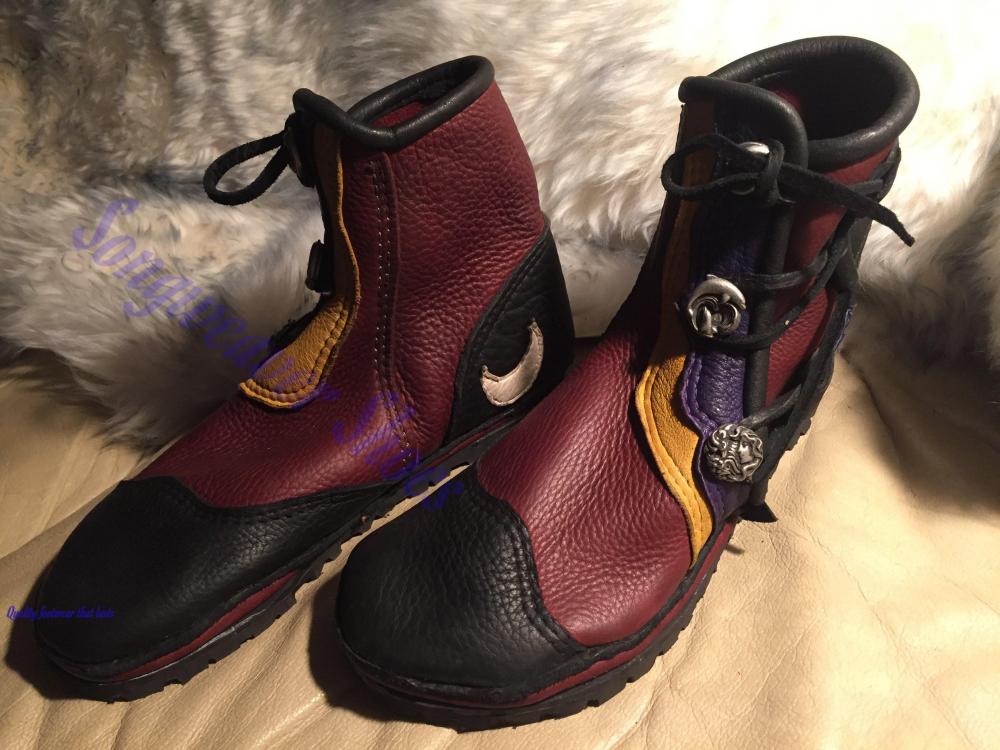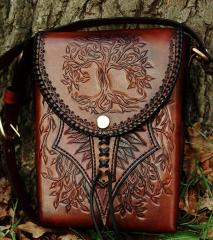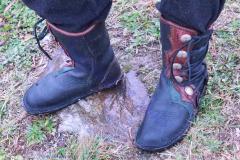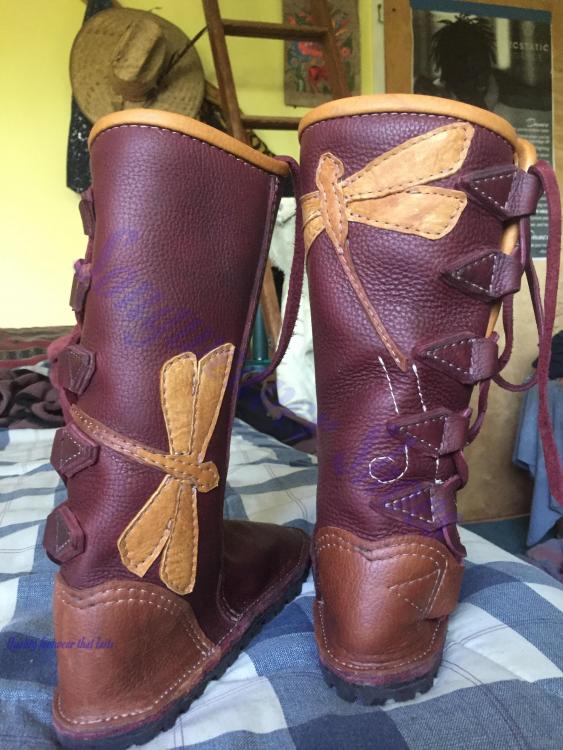
HerukaAvatar
Members-
Posts
24 -
Joined
-
Last visited
Content Type
Profiles
Forums
Events
Blogs
Gallery
Everything posted by HerukaAvatar
-
In terms of hazmat: you can always look up : Hazmat isopropyl. However isopropyl is very similar (one extra carbon) to ethanol (or ethyl alcohol) which people drink to intoxicate themselves. That said, it's sold as a disinfectant you can directly apply to your blood. Not too bad there. However: "2-(2-ethoxyethoxy) ethanol" is a hazard, and pretty out of the ordinary, can cause birth defects (likely why it's banned in CA). If you, or your partner are expecting to conceive soon (a) you should stay away from it, (b) she should not be exposed AT ALL. Methyl Violet is also listed in their ingredients which is also pretty bad. If you are are a regular user of these, you could try a gas mask, however most times these molecules (acetone, ethanol, isopropyl) are all small enough they will pass right through a gas mask, because these molecules are only slightly larger than say, oxygen, or carbon dioxide. So: most of the actual dye colors will be what's toxic I think - as well as 2-(2-ethoxyethoxy) ethanol . And gas masks will likely stop none of these solvents UNLESS you have a gasmask with an air canister: ie. you are breathing from a tank. The hazards of chemistry is that oftentimes the molecules we're trying to hide from are... tiny. I'm saying this with a BS in Chemistry from many years ago. Chemists usually live about 10 years less than most folks. below is chemicals in fiebing's dye. https://www.weaverleather.com/docs/default-source/sds/50-2047-bk.pdf?sfvrsn=1e4792a7_0
-
I go to a local supplier of Vibram soles -
- 14 replies
-
- leatherboots
- leathershoes
-
(and 1 more)
Tagged with:
-
The most expensive wallet on my life (with greetings from Spain)
HerukaAvatar replied to JanLeather's topic in Member Gallery
I don't know if I'm in there with price range with everybody, but I'm making leather boots, and up there at finally paid for my sewing machine, but still have 3k from all the materials, 10 pairs of boots later. -
in-seam boots are where you hide the seams (otherwise around the edge between the topper and the midsole).
- 14 replies
-
- leatherboots
- leathershoes
-
(and 1 more)
Tagged with:
-
Tooled Shoulder Bag
HerukaAvatar commented on AlexOstacchini's gallery image in Gallery- Our Leatherwork
-
From the album: Songweaver Shoes
-
From the album: Songweaver Shoes
-
From the album: Songweaver Shoes
-
From the album: Songweaver Shoes
-
From the album: Songweaver Shoes
-
From the album: Songweaver Shoes
-
From the album: Songweaver Shoes
-
From the album: Songweaver Shoes
-
From the album: Songweaver Shoes
-
nice Aru, I'm excited by boot making, the inseam boots are tricky, and satisfying. I want to see pictures when you're done of what you're up to.
- 14 replies
-
- leatherboots
- leathershoes
-
(and 1 more)
Tagged with:
-
Hello from the grand reaches of California. I'm making leather boots, inseam and out-seam and feeling really stoked and grateful that folks are interested in functional art. Ah.
-
this is amazing
-
- 14 replies
-
- leatherboots
- leathershoes
-
(and 1 more)
Tagged with:
-
The sole is Vibram Kletterlift: super grippy, and lasts. Their sister sole, the Montagna are somewhat famous because they were on the feet of the first ascent of K2.
- 14 replies
-
- leatherboots
- leathershoes
-
(and 1 more)
Tagged with:
-
Thanks guys, I've been considering getting some shearling for sure with 3/8" pile. I just already have some fur. Mostly I'm working to figure out what dimension to add to a boot pattern I've made for somebody that already fits.
-
yeah, inseam shoes are tricky. You can learn this style of shoes from Earthdancer School of Shoemaking (aka Windwalker shoes) if you're really interested. They do a 3 day workshop to make 3 button shoes (or knee-high). HOWEVER, they teach outsole because it's a huge challenge to turn shoes (sew them inside-out, and then turn them right-side-out). So if you want to learn from them you may need to specify before that you REALLY want to learn inseam boots, and you have an extra day after the class, can they please teach you? The turning process can take hours if you have an inflexible shoe sole. And is generally a tricky process to get all the parts right. When I make these shoes, I sew the shoe, get the topper finished with all the fancy things. THEN I sew leather to the mid-sole, with some allowance for the flipping process. And using the intermediary piece of leather (you can see in pic that's cut), which tensions the leather sewn to the mid-sole, that intermediate strip makes it so there are two surfaces to sew to. The toe is flat, on the same plane as the midsole; the heel is perpendicular to the midsole. The process is a mess to explain in words, find a great teacher. I learned with Windwalker Fine Footwear.
-
There are great youtube videos on tensioning whatever your machine is. Oftentimes people will play with the tension with your particular machine. Basically when you see the bobbin thread coming up to the top, or can see the top thread coming through the bottom, your tension needs adjustment. You play with this with your tension nob (primarily), and if you're having a lot of trouble, then you go adjust your bobbin tension, but most things can be solved with a full turn (it helps to make a mark w/ a sharpie) of the tension nob, or maybe 2.
-
I'm making winter (leather) boots, and working with about a 1/2" pile for the fur I'd like to add to the interior of the boots, when I squish it down with my fingers, it is still 1/8" thick. I usually make the fit to somebody's feet exactly as their feet are (using a clever cast-making system with duct-tape). I'm in the process of working to determine how much material approximately I would need to add on the different seams. I can go to a circumference of a ellipse calculator, and work with my ankle, and add 1/8" to the dimensions of my leg, and add the extra circumference around the ring of my leg. However, I'm feeling puzzled with how it might fit if I were to put extra material between the toe/heel. Usually the heel gives great support, but if I add material in the middle, the fit won't be as snug. I'm just sort of stumped and working to best understand how I could add materials there. I've asked my shoe-making teachers, and they haven't responded just yet. Does anybody have a thought?
-
- 14 replies
-
- leatherboots
- leathershoes
-
(and 1 more)
Tagged with:





